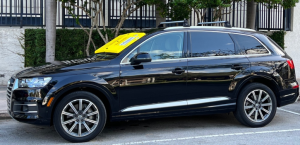Novi, Michigan — More OEM material strategy tidbits are emerging from the Great Designs in Steel (GDIS) symposium that took place in mid-May, including a presentation from a Honda project leader that delved into some of the decisions made on the 2022 Civic’s unique body structure.
New model local project leader at Honda Development and Manufacturing of America, Jill Fuel, walked an audience in Novi, Mich. through a presentation on the materials and processes that led to things like the Civic’s laser-brazed roof.
According to Fuel, aluminum and high-strength steel (HSS) were key ingredients in the 2022 Civic model as a weight-saving method, the latter of which makes up 38 percent of the vehicle’s body. But much of the focus was also put on improving crash performance.
“We focused on areas to improve crash ratings, including the front engine compartment, beside some areas under the doors, and an improved door ring construction,” she said.
The 2022 Civic has a Top Safety Pick+ rating from the Insurance Institute for Highway Safety (IIHS).
The breakdown of HSS materials in the 2022 Civic are as follows: nine percent High Strength with Excellent Formability (Hot Rolled), 16 percent Advanced High Strength Steel with Formability (Cold Rolled), six percent Very High Strength Steel (Cold Rolled) and seven percent Ultra High Strength Steel (Hot Rolled).
The remainder of the steel in the structure is 29 percent Galvannealed Commercial Steel, 14 percent High Carbon Alloy Steel and 19 percent Tensile Strength Dual Phase Steel (Hot Rolled).
In re-configuring the material strategy for the 2022 Civic, Honda engineers had to sort through the challenge of keeping the body easily repairable despite a different combination of materials.
“Every time you introduce a new material, it creates the question of how do you weld through it, and how do you make that sustainable long term in a mass-production setting?” said Fuel.
The body’s weld-through sealer presented a new set of challenges, she said.
“Internally for a while, our biggest struggle was trying to get the welds around the sealer or through the sealer. That was new for us. We’ve applied sealer in the past, but it’s not been the same characteristics that we see with high-performance adhesives. So we’ve incorporated…a lot of vision systems to be able to manage that sealer location in relationship to the welds.”
Fuel also pointed out that, while the vehicle’s aluminum hood contributes to the weight-shedding effort on one hand, it is also designed to lessen the severity of pedestrian injury through the use of shock absorption points.
The 2022 model is also the first Civic to feature a laser brazed roof, which has previously only been offered on the Honda Accord since 2018, 2021 and newer Acura TLXs and all Clarity models.
Fuel said Honda invested $50.2 million to equip its Indiana plant with the technology, which occupies four process spaces in the plant.
Honda’s laser brazing technology uses a two-beam system, with a front green laser preheating and cleaning the galvanneal layer, and a rear blue laser melting the wire and forming the joint. A jig descends to apply pressure to the roof to remove any gaps between the roof and the side panel prior to brazing. The whole process takes the robots about 44.5 seconds per body to complete.
Laser brazing provides a cleaner look, eliminating the molding used between the roof panel and side panels and improves body rigidity by fusing the panels together, Fuel said.





































